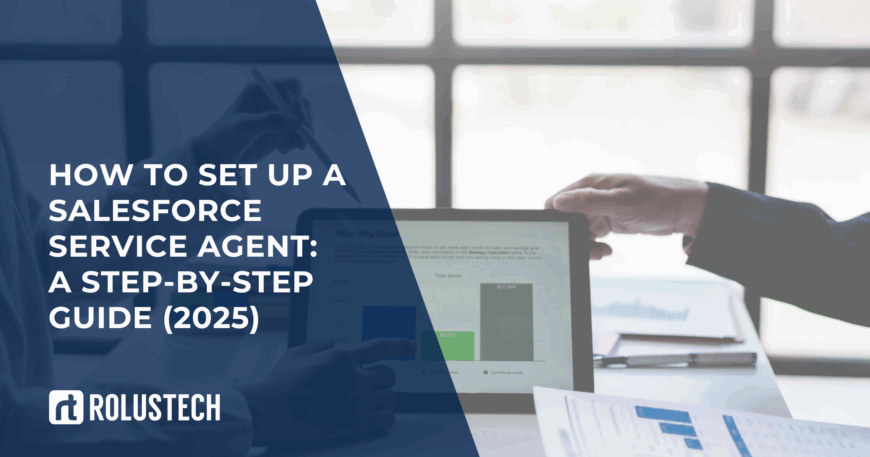Most businesses rely on two major systems: one for operations and another for customer management. An ERP system, such as Sage, helps with accounting, inventory management, procurement, and order processing. A CRM such as SugarCRM manages leads, customer communication, service requests, and sales data. When these systems operate in isolation, teams suffer from data silos, delays, and missed opportunities.
That’s where ERP CRM integration solves a significant headache. By integrating your ERP and CRM platforms, you gain visibility into data across departments. It’s like giving your business one brain that processes everything in sync, automatically, and accurately. Let’s explore what makes the SugarCRM Sage integration so valuable and how to implement it effectively.
Why Integrate Sage ERP with SugarCRM?
Imagine a sales rep trying to close a deal. They ask the finance team if the customer has unpaid invoices. They wait hours or days for a response, meanwhile, the deal stalls. This is common in companies where CRM and ERP systems don’t communicate. Sage ERP stores data such as credit limits, inventory levels, and shipping schedules.
SugarCRM, on the other hand, stores lead records, support history, and sales interactions. Without integration, your teams work with incomplete information. With ERP CRM sync for small businesses, everyone operates on the same page. Sales representatives see inventory in real-time. Finance sees upcoming deals in the pipeline. Support knows if a customer has outstanding orders or unpaid balances. This reduces miscommunication and speeds up the sales and service cycles.
Benefits of ERP to CRM Synchronization
ERP to CRM synchronization goes beyond data sharing it transforms how your business functions.
Here are the most significant benefits:
No more double data entry
Manually copying data between systems is time-consuming and prone to errors. Syncing makes this seamless.
Real-time updates
Inventory changes in Sage instantly reflect in SugarCRM, helping sales reps offer accurate promises.
Faster invoicing and quote generation
Customer details flow directly from CRM to ERP, speeding up quote creation and invoicing.
Better forecasting
Finance and sales teams get aligned forecasts based on shared customer and sales data.
Improved customer experience
Service teams can view order history and resolve issues faster using synced data.
Fewer information silos
Departments no longer work in isolation. Collaboration increases across teams and functions.
Scalable growth
You lay the foundation for automation, workflow triggers, and advanced reporting vital for growing businesses. Whether you’re a mid-sized firm or a startup, SugarCRM Sage integration gives you a competitive edge.

Top Features of a Sage CRM Connector
The Sage CRM connector you choose can make or break your integration experience.
Here’s what to look for:
Two-way data sync
The best connectors support bidirectional data syncing, enabling data to flow seamlessly from the ERP to the CRM and vice versa.
Custom field mapping
Your business may use custom fields. Good tools allow you to map and sync these easily.
Workflow integration
Some connectors enable automation triggers, such as creating an invoice when a deal is won.
Sync filtering
Want only paid customers to sync into SugarCRM? You can set rules to filter data.
Conflict resolution
When data doesn’t match, a good connector notifies you and allows manual override or rules-based resolution.
Activity logging
Logs and history reports help you quickly troubleshoot sync failures or conflicts.
Error alerts
Instant alerts help you identify integration issues before they impact operations.
User permissions
Role-based access ensures that only authorized personnel can view sensitive, synced data.
All these features help ensure smooth and secure ERP CRM integration without constant IT intervention.
Best ERP CRM Integration Tools to Consider
For reliable ERP-to-CRM synchronization, selecting the right tool is crucial. Here are some top ERP CRM integration tools that work well with SugarCRM and Sage ERP:
RT Sugar Integration
Tailored for SugarCRM, it supports Sage 100, 300, and X3. Offers real-time sync, automation, and great support.
StarfishETL
Highly customizable, scalable, and supports both cloud and on-premise ERPs. Suitable for complex data workflows.
Talend
An open-source platform for advanced users. Great flexibility but requires technical expertise to configure.
Zapier (for basic integration)
Ideal for small businesses with limited budgets. Works for basic syncing tasks but lacks depth.
Piesync (now part of HubSpot)
Easy to use, supports 2-way sync for popular platforms. Not ideal for heavy ERP data.
Commercient SYNC
Built explicitly for ERP-CRM integrations. Connects Sage 100 with SugarCRM, supports real-time updates, and requires minimal coding. When selecting the best ERP CRM integration tools, consider your team size, IT support requirements, and customization needs.

Sage 100 Integration with SugarCRM: What You Need to Know
If you’re running Sage 100, connecting it with SugarCRM unlocks serious productivity. Here’s what this combo can do:
Sync customer master data
Customer profiles in Sage 100 sync directly with SugarCRM, ensuring consistent contact data.
Order-to-cash visibility
Sales teams can view order status, invoice history, and credit limits in their CRM.
Create orders from CRM.
Once a deal is closed in SugarCRM, you can push it as a sales order into Sage 100.
Real-time inventory lookup
No more checking with operations. CRM users can view available stock during sales calls.
Invoice sync
Invoices generated in Sage are visible to CRM users, with no delays or surprises.
Secure data sync
Most Sage CRM connectors support encrypted data transmission and user-based access control.
Reduced IT workload
Pre-built Sage 100 integration SugarCRM templates reduce setup time and require little ongoing maintenance.
This integration is ideal for small and mid-sized businesses that want to modernize without a massive investment.
Setup Tips for a Smooth Integration
Getting your ERP CRM integration right takes planning. Here are tips for a smooth rollout:
Clean your data first
Remove duplicates, standardize field formats, and fix outdated records in both systems.
Define sync rules early.
Decide which system is the “master” for each type of data (e.g., orders in ERP, leads in CRM).
Start with a pilot phase.
Run syncs on a small data set. Test everything from field mapping to order creation.
Document everything
Keep a log of what’s being synced, schedules, field mappings, and custom rules.
Involve users from the start.
Train your sales and finance teams early. They’ll adopt the system faster if they’re part of the setup.
Monitor syncs regularly
Set up alerts for failed syncs or data mismatches to ensure timely notification. Review sync logs weekly during launch.
Backup data before launch
Take full backups of both systems. If something breaks, you can quickly restore data.
Choose scalable tools
Even if you’re a small business, choose tools that can handle growth. Avoid one-way or static sync tools.
When in doubt, work with an experienced partner familiar with SugarCRM and Sage integration.
Conclusion
Seamless ERP-CRM integration is no longer a luxury; it’s a business necessity. When you connect Sage ERP with SugarCRM, you empower your teams to work smarter, not harder. No more delays. No more manual errors. Just fast, reliable data at everyone’s fingertips. Whether it’s through a Sage CRM connector or a complete platform integration, the gains are real.
You’ll reduce costs, accelerate processes, and improve customer experience across the board. For companies using Sage 100, integrating with SugarCRM is a smart step toward modern operations. Start small, choose the best ERP CRM integration tools, and scale confidently. If you’re ready to simplify your systems and unlock real-time collaboration, don’t wait.
FAQs
What is ERP CRM integration, and why is it essential for businesses?
ERP CRM integration connects backend systems (like accounting) with front-end platforms (like sales and customer service). It ensures a real-time data flow, facilitates better team collaboration, and enhances decision-making.
How does SugarCRM integrate with Sage ERP?
SugarCRM Sage integration is done using third-party tools or connectors. These tools synchronize data, including contacts, quotes, orders, and invoices, between SugarCRM and Sage 100, 300, or X3 for seamless business operations.
What are the best ERP CRM integration tools for small businesses?
Top tools for CRM ERP sync for small businesses include RT Sugar, StarfishETL, Zapier, Commercient SYNC, and Talend. These offer various levels of automation, customization, and support for Sage CRM connector features.
Can I integrate Sage 100 with SugarCRM without custom development?
Yes, many Sage 100 integration SugarCRM tools come with pre-built templates and require minimal coding. Tools like Commercient SYNC and RT Sugar Integration offer plug-and-play solutions for faster deployment.
What are the most common challenges in ERP to CRM synchronization?
Typical issues include mismatched fields, data conflicts, slow sync speeds, and user training. Using the best ERP CRM integration tools and clear sync rules helps avoid these problems.




